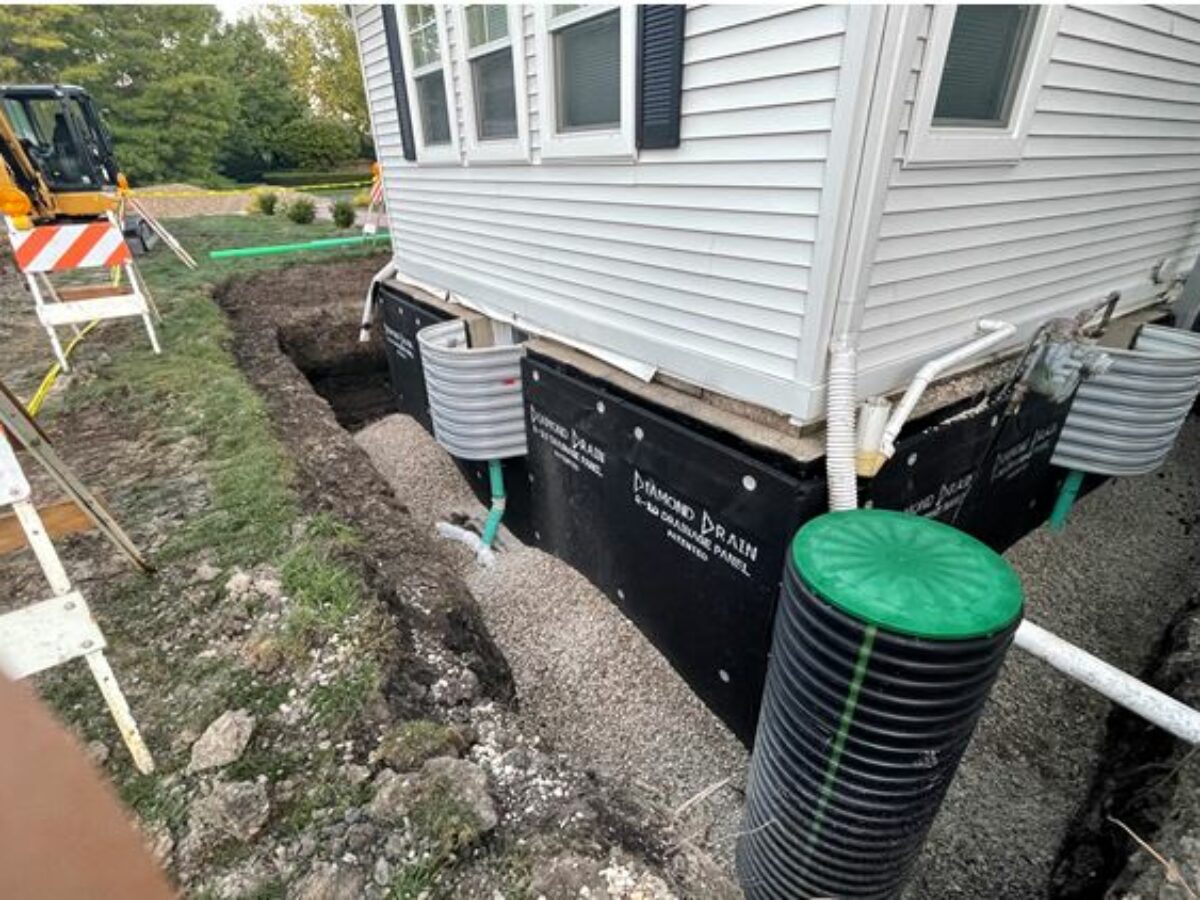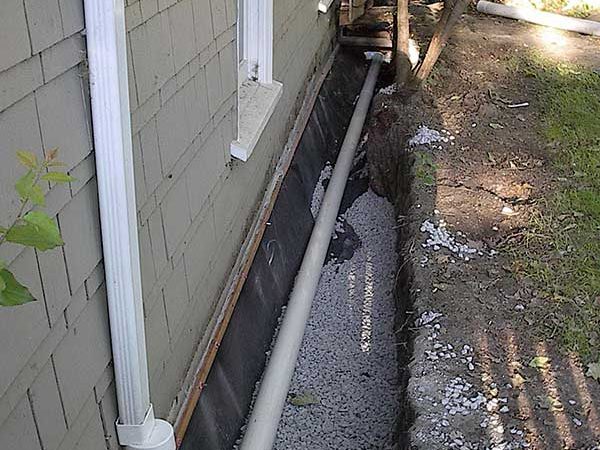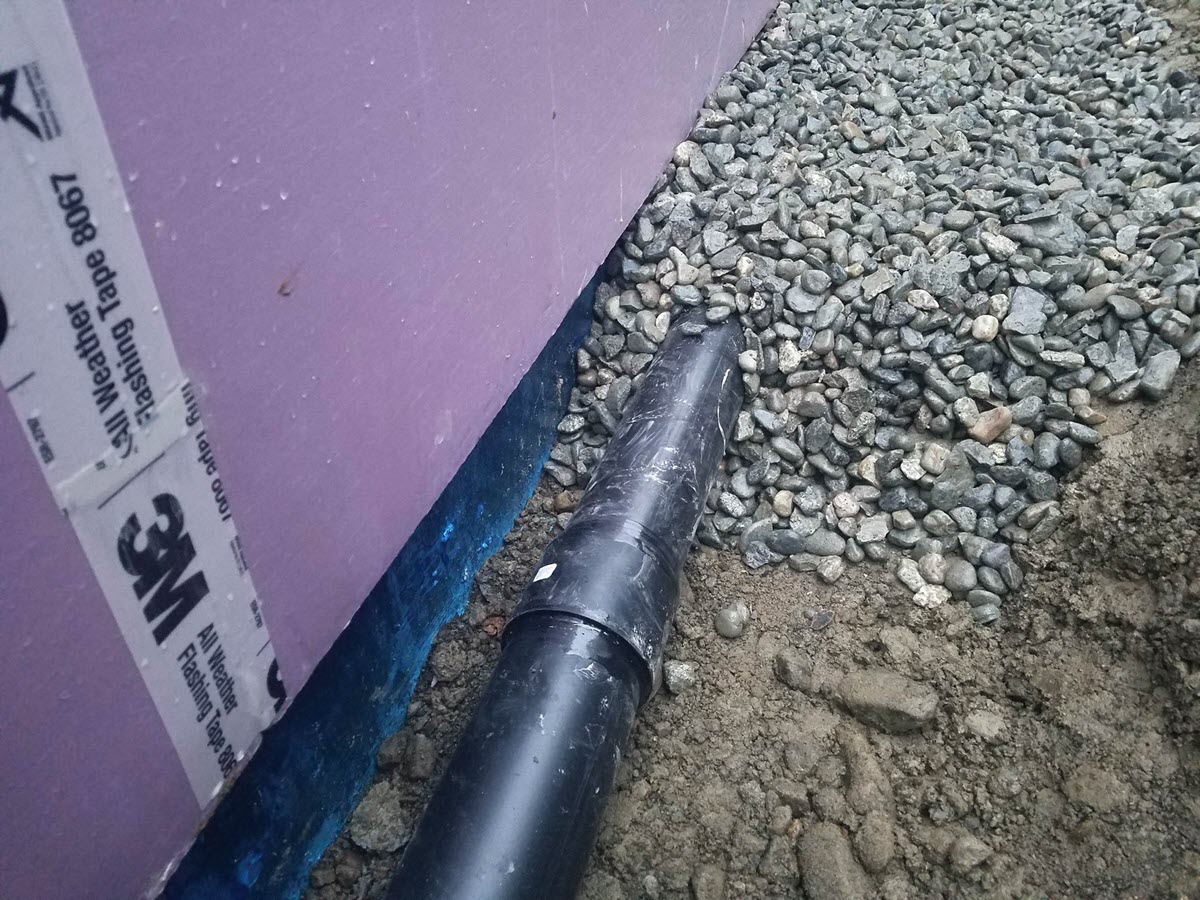Foundation Drain Servicesin Clay Township MI
Foundation Drain Solutions to Keep Your Building Secure
We Are Locally Owned & Operated For Over 37 Years
Contact Us Today!
We Serve Businesses In And Around The Following Cities:
About Foundation Drain Services
Introduction
In the heart of Clay Township in the city of Detroit, commercial properties have an ever-present awareness of one fundamental aspect of proper infrastructure: foundation drain systems. With constantly changing environmental dynamics, ensuring optimal functionality of a foundation drainage system has become a best-practice focus. This guide provides a comprehensive overview of the process, real-life applications, and benefits of well-executed foundation drain systems, with a special emphasis on commercial properties in Clay Township.
Understanding Foundation Drain
The concept of a foundation drain is quite straightforward. It is a system designed to divert water away from the base (or foundation) of a structure to avoid water buildup and subsequent damage. One common type of foundation drain system is the foundation french drain, a popular choice for its efficiency in managing surface water and for mitigating the risks of structural damage.
Throughout Clay Township, variants of foundation drain systems are visible, from exterior foundation drains handling stormwater runoff to foundation footer drains ensuring water is directed away from basements. These systems are carefully designed to offer the best protection for structures, in both the wet and dry periods of the year.
The Benefits of Proper Foundation Drainage
Any commercial property with an adequately functional foundation drainage system such as the foundation perimeter drain system experiences several benefits. The most crucial advantage of course, is the prevention of structural damage. By directing water away from the house foundation, the threat of water seeping into the building reduces dramatically. Other benefits include the prevention of mold and mildew that often accompany continuous exposure to moisture, and maintaining the integrity of landscaping around the property.
Skilled professionals, like the team at D&J Contracting, are experts at installing the most appropriate foundation drain systems, such as an exterior foundation drain or drain system around foundation, depending on the unique needs of each property.
Process of Installing Foundation Drain Systems
The process of installing a foundation drain requires proficiency, precision, and careful evaluation of the property. A typical example is the installation of a foundation footer drain system. It begins with site assessment, including soil and slope analysis, before proceeding to excavation around the foundation to create space for a gravel bed. Shortly after, a drain pipe is laid and covered with more gravel. Finally, the trench is filled and compacted to create a slope away from the foundation.
Drain water away from house foundation is not the only application for foundation drainage systems. These systems also help in the overall enhancement of the green spaces of commercial properties. For instance, foundation water drainage systems play a pivotal role in keeping ground moisture levels balanced, ensuring the healthy growth of flowers and trees around the property.
D&J Contracting: Foundation Drain Experts
D&J Contracting, a long-term key player in the building industry in Clay Township, extends its expertise in providing top-notch foundation drain services. Homeowners and commercial property owners alike have benefitted greatly from their meticulously installed foundation french drain, among other services. Their operational foundation wall drainage systems enhance the landscape value, protect the foundation, and ensure a water damage-free property.
Adopting Foundation Drainage Systems – A Vital Requirement
In an era of rapid infrastructure development, leaving no stone unturned when it comes to building protection is crucial. As seen in Clay Township, organic integration of foundation drainage systems like exterior foundation drain and foundation footer drain into commercial building infrastructure is not just an afterthought but a requirement. The safety, resilience, and property value of commercial buildings significantly increase with the implementation of proper foundation drainage systems.
D&J Contracting is revolutionizing the implementation of drain systems around foundation in Clay Township through their innovative designs and solid technical knowledge. All Clay Township property owners are encouraged to embrace foundation drains as part of their structural best-practices for sustainable and robust commercial development.
So whether you are planning on installing a foundation drain or looking to improve the existing drainage near your foundation, consult with a trusted local contractor like D&J Contracting who can provide tailored solutions suited to your commercial property’s specific requirements.
While the tasks of planning and installing a foundation drain system may seem a bit daunting, remember that it’s an investment that will pay off many times over in the long run. Not only will it protect your building and surrounding property from water damage, but it will also contribute to the overall value of your property in Clay Township.
In summary, proactive implementation of foundation drain systems such as drain water away from house foundation and foundation perimeter drains are strategic necessities for all commercial property owners in Clay Township. It ensures building longevity, prevents possible water damage, and sustains landscape aesthetics. Companies like D&J Contracting offer a blend of expertise and local knowledge to ensure your foundation drain system efficiently meets your commercial property’s operational and environmental demands.
Foundation Drain Services Gallery


Call Us Today to receive your Free Quote for
Foundation Drain in Clay Township
Serving: Clay Township, Michigan

About Clay Township, Michigan
The area was first settled by John Martin in 1805, and the area was originally referred to as Pointe du Chene (Oak Point). In 1826, the area was organized as Plainfield Township, which was named by early settler John K. Smith after his hometown of Plainfield, Vermont. A post office named Plainfield began operating here on April 5, 1826 with Smith serving as the first postmaster. In 1828, the township was reorganized and renamed after attorney and statesman Henry Clay, and the post office was later renamed Clay on December 23, 1835; Smith continued serving as postmaster. The post office was renamed Algonac on August 17, 1843. Algonac incorporated as a village within Clay Township in 1867. The village gained autonomy from the township when it incorporated as a city in 1967.
- Colony Tower Complex
- Harsen House
- LeRoy Smith House
- North Channel Shooting Club
- St. Clair River Informational Designation
- Stewart Farm / Memoir of Aura Stewart
- St. Clair Flats Front and Rear Range Light
According to the U.S. Census Bureau, the township has a total area of 82.47 square miles (213.60 km), of which 35.32 square miles (91.48 km) is land and 47.15 square miles (122.12 km) (57.17%) is water.
The township contains a large portion of water that includes areas along the St. Clair River mouth in the northern Anchor Bay area of Lake St. Clair, which contains numerous channels and canals. Directly across the river is the Walpole Island First Nation in Ontario, which is accessible via the Walpole–Algonac Ferry in downtown Algonac.
The St. Clair Flats State Wildlife Area and the majority of the St. John’s Marsh State Wildlife Area are located within Clay Township. Most of Algonac State Park is located within Clay Township with a small portion extending north into Cottrellville Township.
- Bedore is an unincorporated community located along the southern coast of Harsens Island at 42°33′28″N 82°36′47″W / 42.5578126°N 82.6129630°W.
- Clays Landing is an unincorporated community located at the southern terminus of M-154 on Harsens Island at 42°33′06″N 82°36′16″W / 42.5517016°N 82.6043512°W.
- Forster is an unincorporated community located just west of Bedore at 42°33′40″N 82°37′06″W / 42.5611459°N 82.6182410°W.
- Grand Pointe is an unincorporated community located in the northeastern area of Harsens Island at 42°35′58″N 82°32′43″W / 42.5994788°N 82.5451844°W. The affluent community was settled as early as 1888 by the Grand Pointe Improvement Company, and a post office operated briefly from October 16, 1889 until January 5, 1892.
- Harsens Island is the name of the post office that serves the island and several surrounding islands. Harsens Island was first settled as early as 1779 by James Harsen, who was the area’s first white settler. By 1783, Harsen had purchased the entire island from its native Indian population. As late as 1809, the island was also known as James (also Jacob or Jacobus) Island. The post office began operating under the name Sans Souci on April 24, 1900 and was renamed Harsens Island on December 31, 1960. The post office uses the 48028 ZIP Code.
- Maple Leaf is an unincorporated community located on Harsens Island just southwest of the community of Sans Souci at 42°34′41″N 82°34′11″W / 42.5780902°N 82.5696288°W.
- Miller is an unincorporated community located near the southernmost end of Harsens Island at the end of public road access at 42°32′57″N 82°39′32″W / 42.5492017°N 82.6587976°W.
- Muirs is an unincorporated community located along M-154 on Harsens Island at 42°33′23″N 82°35′14″W / 42.5564238°N 82.5871285°W.
- Pearl Beach is an unincorporated community and census-designated place (CDP) located along the southern end of the mainland at 42°37′36″N 82°35′52″W / 42.6267006°N 82.5976876°W.
- Perch Point is an unincorporated community located along M-29 in the northwestern portion of the township along the border with Ira Township at 42°39′54″N 82°37′13″W / 42.6650333°N 82.6201900°W.
- Pointe aux Tremble is an unincorporated community located along M-29 within the Pearl Beach CDP at 42°37′17″N 82°34′16″W / 42.6214230°N 82.5710196°W. The community was settled in 1904 as a station along the railway about 3.0 miles (4.8 km) west of Algonac.
- Riverside is an unincorporated community located in the southern portion of Harsens Island at 42°33′32″N 82°37′49″W / 42.5589237°N 82.6301859°W.
- Roberts Landing is an unincorporated community located along M-29 near Algonac State Park along the border with Cottrellville Township at 42°39′35″N 82°30′57″W / 42.6597561°N 82.5157415°W. The community was named after its first settler, who arrived here in 1830. The Roberts family settled the area as a popular fishing and hunting destination. A post office operated here from April 29, 1869 until December 15, 1895.
- Sans Souci is an unincorporated community located on Harsens Island at 42°34′52″N 82°33′44″W / 42.5811490°N 82.5621580°W.
As of the census of 2000, there were 9,822 people, 3,934 households, and 2,844 families residing in the township. The population density was 277.0 inhabitants per square mile (107.0/km). There were 5,325 housing units at an average density of 150.2 per square mile (58.0/km). The racial makeup of the township was 97.92% White, 0.20% African American, 0.68% Native American, 0.11% Asian, 0.21% from other races, and 0.87% from two or more races. Hispanic or Latino of any race were 0.85% of the population.
There were 3,934 households, out of which 27.9% had children under the age of 18 living with them, 61.3% were married couples living together, 7.0% had a female householder with no husband present, and 27.7% were non-families. 22.9% of all households were made up of individuals, and 9.2% had someone living alone who was 65 years of age or older. The average household size was 2.50 and the average family size was 2.94.
In the township the population was spread out, with 22.6% under the age of 18, 6.5% from 18 to 24, 28.2% from 25 to 44, 28.8% from 45 to 64, and 13.9% who were 65 years of age or older. The median age was 41 years. For every 100 females, there were 103.6 males. For every 100 females age 18 and over, there were 103.2 males.
The median income for a household in the township was $55,059, and the median income for a family was $63,182. Males had a median income of $48,053 versus $31,923 for females. The per capita income for the township was $27,169. About 2.3% of families and 4.7% of the population were below the poverty line, including 6.7% of those under age 18 and 3.6% of those age 65 or over.
Call Us Today to receive your Free Quote for
Foundation Drain in Clay Township
Related Services in Clay Township, Michigan
We Serve Businesses In The Following Zip Codes:
48007, 48015, 48021, 48026, 48035, 48036, 48038, 48042, 48043, 48044, 48045, 48046, 48047, 48048, 48050, 48051, 48066, 48071, 48080, 48081, 48082, 48083, 48084, 48085, 48088, 48089, 48090, 48091, 48092, 48093, 48098, 48099, 48225, 48230, 48236, 48310, 48311, 48312, 48313, 48314, 48315, 48316, 48317, 48318, 48397